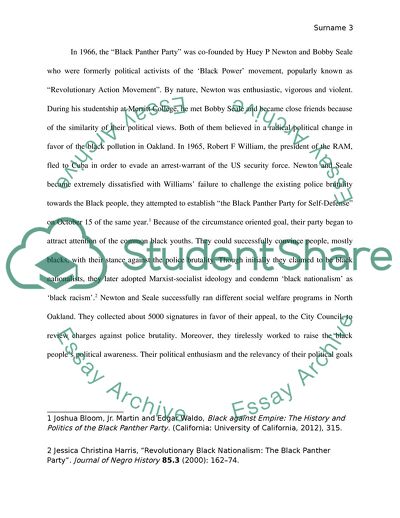Cite this document
(Was the Black Panther Party Really Notorious Case Study Example | Topics and Well Written Essays - 2250 words, n.d.)
Was the Black Panther Party Really Notorious Case Study Example | Topics and Well Written Essays - 2250 words. https://studentshare.org/history/1816938-black-panthers-myth-vs-reality
Was the Black Panther Party Really Notorious Case Study Example | Topics and Well Written Essays - 2250 words. https://studentshare.org/history/1816938-black-panthers-myth-vs-reality
(Was the Black Panther Party Really Notorious Case Study Example | Topics and Well Written Essays - 2250 Words)
Was the Black Panther Party Really Notorious Case Study Example | Topics and Well Written Essays - 2250 Words. https://studentshare.org/history/1816938-black-panthers-myth-vs-reality.
Was the Black Panther Party Really Notorious Case Study Example | Topics and Well Written Essays - 2250 Words. https://studentshare.org/history/1816938-black-panthers-myth-vs-reality.
“Was the Black Panther Party Really Notorious Case Study Example | Topics and Well Written Essays - 2250 Words”. https://studentshare.org/history/1816938-black-panthers-myth-vs-reality.


